Filter by

A half century of Romance linguistics : Selected proceedings of the 50th Ling…
The present volume presents a selection of the revised and peer-reviewed proceedings articles of the 50th Linguistic Symposium on Romance Languages (LSRL 50) which was hosted virtually by the faculty and students from the University of Texas at Austin. With contributions from rising and senior scholars from Europe and the Americas, the volume demonstrates the breadth of research in contemporary…
- Edition
- -
- ISBN/ISSN
- 9783985540631
- Collation
- 380 hlm
- Series Title
- -
- Call Number
- -

A Grammar of Yélî Dnye : The Papuan Language of Rossel Island
This is a comprehensive description of a language spoken offshore from Papua New Guinea, remarkable for its phonological, morphological and syntactic complexity. As the sole surviving member of its language family, it provides unique evidence for the kind of languages spoken in this part of the world before the Austronesian expansion. The grammar provides detailed information on phoneme invento…
- Edition
- -
- ISBN/ISSN
- 9783110733853
- Collation
- 587 hlm
- Series Title
- -
- Call Number
- -
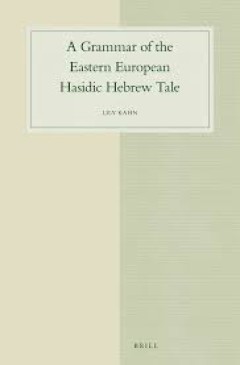
A Grammar of the Eastern European Hasidic Hebrew Tale
A Grammar of the Eastern European Hasidic Hebrew Tale provides the first detailed linguistic analysis of the Hebrew narrative literature composed in late nineteenth- and early twentieth-century Eastern Europe by followers of the Hasidic spiritual movement. It presents a thorough description of Hasidic Hebrew orthography, morphology, syntax, and lexis illustrated with extensive examples. Attenti…
- Edition
- Volume: 77
- ISBN/ISSN
- 9789004281622
- Collation
- 450 hlm
- Series Title
- -
- Call Number
- -
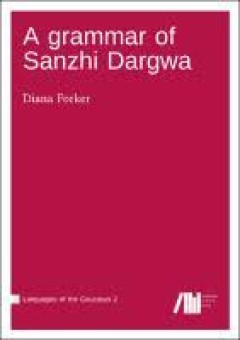
A grammar of Sanzhi Dargwa (Volume 2)
Sanzhi Dargwa belongs to the Dargwa (Dargi) languages (ISO dar; Glottocode sanz1248) which form a subgroup of the East Caucasian (Nakh-Dagestanian) language family. Sanzhi Dargwa is spoken by approximately 250 speakers and is severely endangered. This book is the first comprehensive descriptive grammar of Sanzhi, written from a typological perspective. It treats all major levels of grammar (pho…
- Edition
- -
- ISBN/ISSN
- 9783961101962
- Collation
- -
- Series Title
- -
- Call Number
- -

Afro-Peruvian Spanish: Spanish slavery and the legacy of Spanish Creoles
The present work not only contributes to shedding light on the linguistic and socio-historical origins of Afro-Peruvian Spanish, it also helps clarify the controversial puzzle concerning the genesis of Spanish creoles in the Americas in a broader sense. In order to provide a more concrete answer to the questions raised by McWhorter’s book on The Missing Spanish Creoles, the current study has …
- Edition
- -
- ISBN/ISSN
- 9789027252753
- Collation
- 200
- Series Title
- Creole Language Library
- Call Number
- -

Afro-Peruvian Spanish
The present work not only contributes to shedding light on the linguistic and socio-historical origins of Afro-Peruvian Spanish, it also helps clarify the controversial puzzle concerning the genesis of Spanish creoles in the Americas in a broader sense. In order to provide a more concrete answer to the questions raised by McWhorter’s book on The Missing Spanish Creoles, the current study has …
- Edition
- -
- ISBN/ISSN
- 9789027267764
- Collation
- -
- Series Title
- -
- Call Number
- 104394

A grammar of Pichi
Pichi is an Afro-Caribbean English-lexifier Creole spoken on the island of Bioko, Equatorial Guinea. It is an offshoot of 19th century Krio (Sierra Leone) and shares many characteristics with West African relatives like Nigerian Pidgin, Cameroon Pidgin, and Ghanaian Pidgin English, as well as with the English-lexifier creoles of the insular and continental Caribbean. This comprehensive descript…
- Edition
- -
- ISBN/ISSN
- 978-3-96110-133-7
- Collation
- 692 hlm
- Series Title
- -
- Call Number
- -
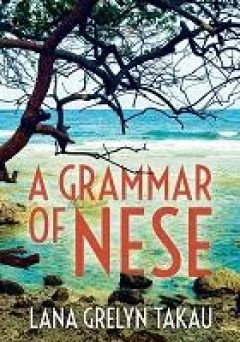
A Grammar of Nese
Nese is a dying Oceanic language spoken on the island of Malekula, in northern Vanuatu. This book, based on first-hand fieldwork data, and without adhering to any particular syntactic framework, presents a synchronic grammatical description of Nese's phonology and syntax. Despite being on the verge of extinction, wi…
- Edition
- -
- ISBN/ISSN
- 9781760465568
- Collation
- 350 hlm
- Series Title
- -
- Call Number
- -
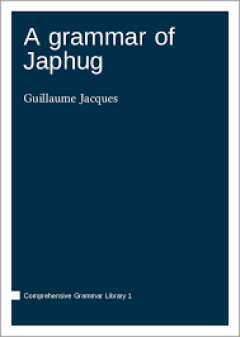
Superseded: A grammar of Japhug
Japhug is a vulnerable Gyalrongic language, which belongs to the Trans-Himalayan (Sino-Tibetan) family. It is spoken by several thousand speakers in Mbarkham county, Rngaba district, Sichuan province, China. This grammar is the result of nearly 20 years of fieldwork on one variety of Japhug, based on a corpus of narratives and conversations, a large part of which is available from the Pangloss …
- Edition
- -
- ISBN/ISSN
- 978-3-96110-305-8
- Collation
- 1551 hlm
- Series Title
- -
- Call Number
- -
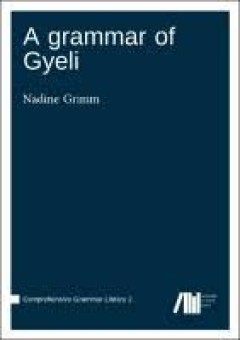
A grammar of Gyeli (Volume 2)
This grammar offers a grammatical description of the Ngo?lo? variety of Gyeli, an endangered Bantu (A80) language spoken by 4,000-5,000 "Pygmy" hunter-gatherers in southern Cameroon. It represents one of the most comprehensive descriptions of a northwestern Bantu language. The grammatical description, which is couched in a form-to-function approach, covers all levels of language, ranging from G…
- Edition
- -
- ISBN/ISSN
- 9783985540075
- Collation
- -
- Series Title
- -
- Call Number
- -
 Computer Science, Information & General Works
Computer Science, Information & General Works  Philosophy & Psychology
Philosophy & Psychology  Religion
Religion  Social Sciences
Social Sciences  Language
Language  Pure Science
Pure Science  Applied Sciences
Applied Sciences  Art & Recreation
Art & Recreation  Literature
Literature  History & Geography
History & Geography